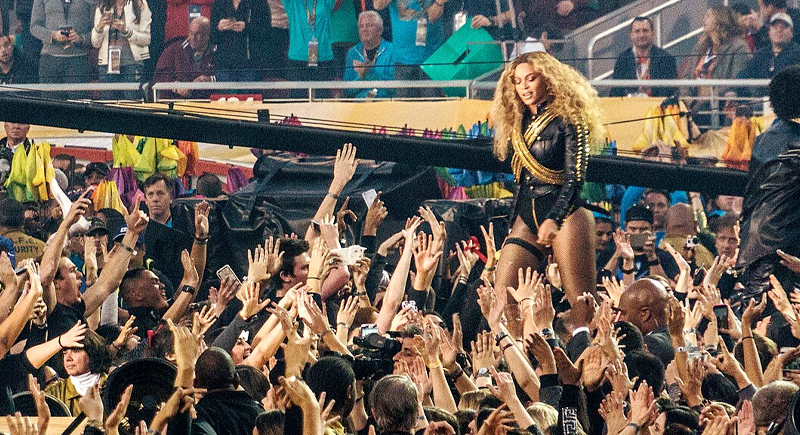Super Bowl Halftime Shows That Caused Nationwide Controversy
The Super Bowl halftime show began as a simple break in the game but evolved into one of the most-watched entertainment segments on television. It features a high-stakes performance slot for major artists. The massive audiences and limited rehearsal time mean mistakes or bold choices can easily become national stories.
These halftime incidents left a permanent mark on the NFL’s approach to Super Bowl entertainment and shaped the show into the tightly controlled spectacle seen today.
Janet Jackson and Justin Timberlake’s 2004 Incident
One prime example of a halftime show turning into a national controversy came in 2004 during Janet Jackson’s performance with Justin Timberlake. At the end of their set, Timberlake tore off part of Jackson’s costume and indecently exposed her for less than a second to 140 million viewers. The moment triggered a federal investigation and led Congress to raise fines for indecency on broadcast television more than tenfold.
Jackson’s career suffered a steep decline as networks blacklisted her, while Timberlake continued largely unaffected. Years later, the FCC chairman admitted his outrage at the incident had been exaggerated. This single set led to tighter controls, delayed feeds, and increased oversight over every aspect of future performances.
M.I.A.’s Gesture Sparks a Multi-Million Dollar Lawsuit
No one expected a background performer in a highly scripted show to trigger headlines, but that’s exactly what happened during Madonna’s 2012 halftime set. M.I.A., brought on briefly alongside other guests, suddenly flipped her middle finger to the camera during her appearance.
The NFL issued an immediate apology, and hundreds of viewers filed complaints to the FCC. Soon after, the league filed a $16.6 million lawsuit against M.I.A. for damages and cited the exposure of the gesture during family programming. She later joked on Twitter about borrowing the money from Madonna, but the case was serious and eventually ended in a confidential settlement.
Beyoncé’s Formation Performance Draws Political Backlash

Image via Wikimedia Commons/Arnie Papp
In 2016, Beyoncé took the stage during Coldplay’s halftime show and quickly dominated the headlines. She performed “Formation” with dancers wearing outfits reminiscent of the Black Panther Party and a costume lined with bullet-style accessories. The segment addressed themes of Black identity and police brutality and prompted backlash from law enforcement groups and conservative commentators.
Calls for boycotts emerged, and the controversy reached a national scale. Beyoncé’s appearance overshadowed Coldplay entirely. Even “Saturday Night Live” parodied the reaction with a sketch about public shock over the act.
Disney’s Concepts and NFL Misfires Confuse Audiences
Long before pop stars dominated halftime, the NFL relied on themed productions, often through Disney. In 1995, the league approved an Indiana Jones–style halftime show to promote a Disneyland ride. The routine featured a Harrison Ford impersonator, shirtless dancers, stunts with flaming parachutes, and Patti LaBelle singing “Can You Feel the Love Tonight?” Tony Bennett also appeared, though seemingly out of place amid the chaos.
In 2000, Disney returned with its “Millennium” production featuring Phil Collins, Christina Aguilera, Enrique Iglesias, and Toni Braxton singing unfamiliar songs while Edward James Olmos delivered solemn narration about global unity.
Audiences didn’t respond well to either effort. Though they’re not exactly controversies, these misfires paved the way for the NFL to pivot toward single-artist concerts to reduce the risk of overly ambitious themes.